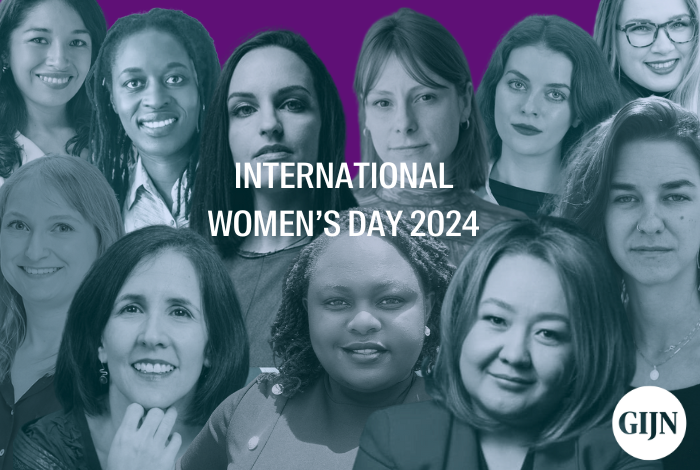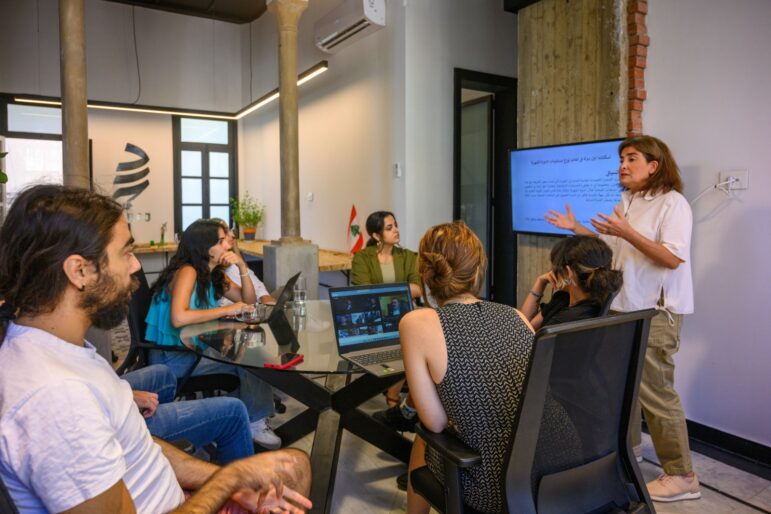

Welcome to the Wild, Wired World of Next Generation Investigative Journalism

New Tech: With investigative journalism increasingly done on mobile phones, journalists have to worry about digital security. Image: Pexels
After the Babri Masjid (a mosque) was demolished in 1992, correspondents of India Today — journalists like Yubaraj Ghimire, NK Singh and others — used to get trolled for their reportage critical of the Sangh Brotherhood, a Hindu nationalist group.
“Postcards addressed to the journalists used to land up in the office from 14 different cities, but typed on what was apparently a single typewriter,” says Ghimire. Sounds medieval, doesn’t it? Postcard trolling? Almost cute. India Today was still a fortnightly in the early 1990s and Outlook was yet to be born. These days trolls swat you on Twitter, DM you, start spinning your stories in a direction you never thought possible, meme the shit out of you…you could go on and on. All within minutes of a sensitive story being posted on social media.
In the mid-1990s, when Outlook started, there was the luxury of curling up in a foxhole for 10 days before the letters to the editor started coming. The late founder-editor Vinod Mehta himself used to monitor the letters pages and he would be the first to print letters criticizing our stories. On the odd occasion when an affected party had to bitch urgently, they would call on the PBX line and then it was his or her luck whether Mehta would take the call or not. But Mehta rarely passed on the pressure to the reporter.
The only tool of communication at Outlook then was our PBX line, where a dial tone came after about 20 minutes of trying, and a single direct line for reporters. Sometimes, a coin would be tossed to determine who would get the next direct line after a reporter finished his or her call.
Mobiles, when they first arrived, were naturally too expensive for reporters, though the editors started using them from 1996 onwards. At 16 rupees per minute, the call rates were prohibitive and the Nokia instruments clunky. To meet sources, you had to take an car or bike it down to wherever. Just a lucky few had cars.
These days, attending a global investigative journalism conference is like being a part of some technophile’s version of Alice in Wonderland. You could run through 20 notebooks and still not be sure you have all of it. There are panels on encryption, how to protect sources, journalism through virtual reality, MOJO classes, how to be a graphics ninja, how to outwit the mafia, satellite imagery, data journalism for nerds, how to expose fake news, web scraping, cross-border money trails, how to read spreadsheets, online verification, introduction to coding, how to visualize data, building your own database, even esoteric ones like “How to investigate North Korea,” coping with online harassment — and, indeed, how to deal with journalistic PTSD!
Then there’s Paul Myers, the BBC judoka, who will teach you things about Google, Facebook and Twitter that for the uninitiated would seem like something straight out of Harry Potter. Veterans coming in from the cold to these conferences could develop technicolor dreads in their head. A graphics screen could look like the console of the USS Enterprise. In a session on how to deal with social media Huns, you could conclude that it’s better to lock yourself behind 50 doors.
Unfortunately, isolation is no longer an option. If your organization is social media-illiterate and can’t cope with the tyranny of algorithms, you will soon be a startup statistic. The best of investigations not read by anyone…the great invisible story. A bit like the way the Mediapart scoop with former French President François Hollande lasted all of some hours, perhaps, on Indian television before “servile” channels began to spin it in different ways or ignore it altogether.
But even if your organization is social media-literate, to emerge from the digital colonization of the American technology giants looms as a magic art that very few have mastered. And now the Chinese are getting into the game. In India, for instance, the digital traffic of Chinese-controlled entities like UC News and Daily Hunt are capturing traffic at exponential speeds, especially in tier two and three cities, and even in metros. None of the Chinese media or technology companies are interested in investing in traditional Indian media companies.
In the early 1990s, you couldn’t do without your micro-cassette audio recorder. It used to be a prized possession. A 30-minute interview would take four hours to transcribe. Today, there’s software that can auto-transcribe stuff like that for you in a few minutes. The cassettes would also have a tendency to disappear just when you were looking for them when the lawyer asked you about evidence. These days your entire life’s work can be stored in an Apple device, and you could even zap it to the cloud and will it to your descendants!
The sessions that attract bulging crowds at investigative conferences, especially at the Global Investigative Journalism Conference, are the ones about mobile phone security. No one emerges from such sessions with any degree of satisfaction. Things are really scary out there. Investigative journalists are full of questions: Is WhatsApp safe? Is Telegram safe? What about Messenger, Snapchat, Confide, Gmail and the whole rest of them? A panel full of serious, digital cloak-and-dagger types will survey rooms full of digitally challenged journalists and throw pearls of wisdom that could essentially morph into one statement, “Nobody knows the shit that is on these phones. There are no guarantees.”
But even if we can be confident about the encryption robustness of some VOIP messaging apps, the metadata will reveal who we are talking to. So using these New-Age VOIPs is absolutely no guarantee that your defense ministry source will be protected. There’s still nothing better than meeting him or her in a mall parking lot and driving around. One on one. The more things get complicated, the more experts advise you to go Neolithic.
Then there are guys like Christiaan Triebert of Bellingcat. At a recent UNESCO talk in Tunisia, he had law and journalism students mesmerized by how Bellingcat geo-located a social media executioner in Libya through open source material. It had them wading through Google maps, matching vegetation and ascertaining local time through the length of shadows in pictures.
To be an investigative journalist today, having a source who shines light on shady deals is perhaps just one of the 50 ways to roll out a story. Journalists at the International Consortium of Investigative Journalists, who brought trouble to politicians, businessmen and others by exposing their offshore banking accounts in the Panama Papers, can hunt down criminal and tax-evading entities much faster than bureaucracy-plagued state investigative agencies.
In breaking the Panama Papers story, ICIJ not only hunted down these networks in months, but also rose above normal media-competitive urges. They demonstrated technical proficiency in communicating through encrypted channels and had a nuclear ripple zone through several nations — notably, Pakistan. Their front-end design also broke new ground. The value of international investigative networks in tracking dirty money, wildlife trade, human trafficking and multinational dirty tricks has been demonstrated dozens of times.
In the 1990s in Indian media, we couldn’t even get two local media platforms to collaborate on a story in Delhi. Things haven’t improved much. The alliances that exist are not institutional, just the personal chemistry among individual investigative journalists. We have this toxic culture where media platforms rarely follow up on great stories broken by rivals. Certain mass dailies even have a policy of not mentioning the names of other media platforms that have broken certain stories. It’s pathetic.
The convergence of media technologies on the mobile phone and the American tech companies have at least made it easy for startups and individuals to distribute content at no cost through YouTube, Facebook and other platforms. That has flattened, to an extent, the inequality that existed before. Journalists with stories to tell can go viral on pure content. Journalists of the 1980s and ’90s had no alternative way to peddle their investigations if their editors said no to a story.
The information explosion has also expanded the definition of whom we can call an investigative journalist. It could be an accountant poring over balance sheets, a drone operator tracking a vehicle used in a shootout, a data forensic expert, a person tracking disinformation, a Google Maps freak poring over satellite images, a data visualizer using coding and graphics to better explain a story, data journalists who bring you statistics about tuberculosis, a reporter collecting criminal confessions on a hidden camera, an RTI activist bombarding ministries with carefully drafted requests, a citizen journalist unnerving a municipality by digging into details of payments to contractors, a doctor investigating a virus across continents and a host of other stuff. None of them may be investigative journalists all the time or even be thinking of themselves as that, but they surely perform the functions of one.
Future investigation desks have to be headed by editors who understand the value of hybrid talent being brought together on a story. A reporter might be able to get a dump of dodgy financial records, but it could take the skills of a person able to read balance sheets, maybe an intern who gets his or her kicks out of poring over land registry records, and a data visualizer to bring it all together as a product. In the times ahead, single-person bylines on investigative stories would be the sign of a desk still baked in the old ways.
However, a desk conscious of the value of creating institutional and individual networks, and with an amalgam of skills and flair, will best inject the much-needed penicillin into our body politic. That desk alone will trouble the comfortable and comfort the troubled.
This post first appeared on Outlook India website and is reproduced here as a courtesy of Outlook India magazine and GIJN member Cobrapost.
 Aniruddha Bahal is the founder and editor-in-chief of Cobrapost.com, an Indian news and views website and television production house. Previously, he worked for India Today, Down to Earth, Financial Express & Outlook, among other publications. He also co-founded Tehelka.com.
Aniruddha Bahal is the founder and editor-in-chief of Cobrapost.com, an Indian news and views website and television production house. Previously, he worked for India Today, Down to Earth, Financial Express & Outlook, among other publications. He also co-founded Tehelka.com.










